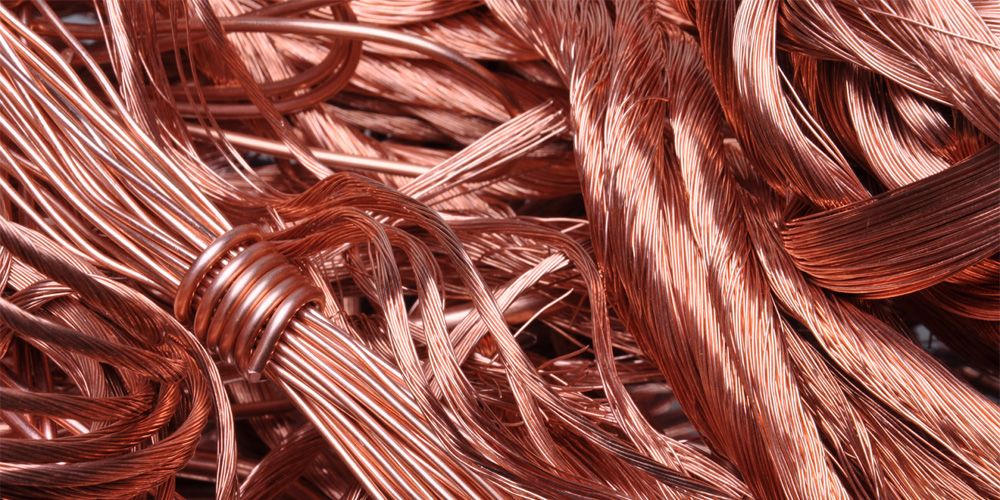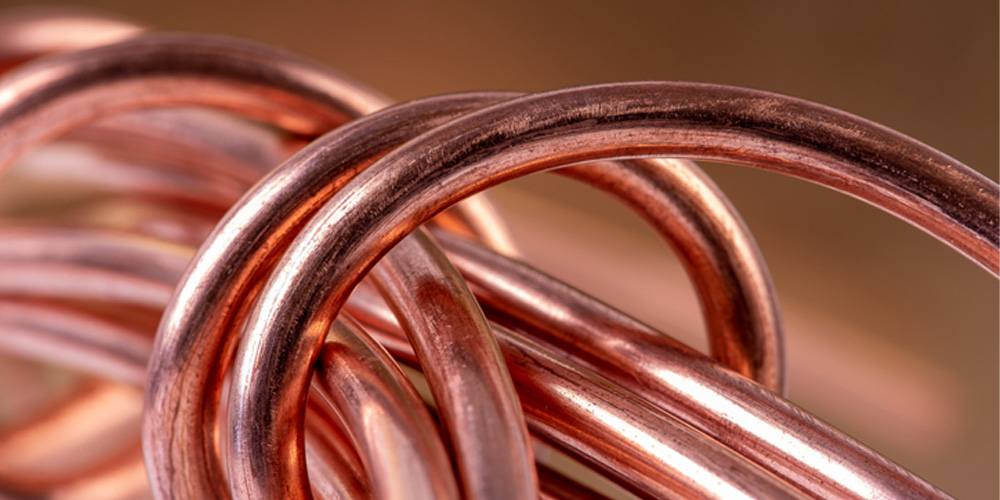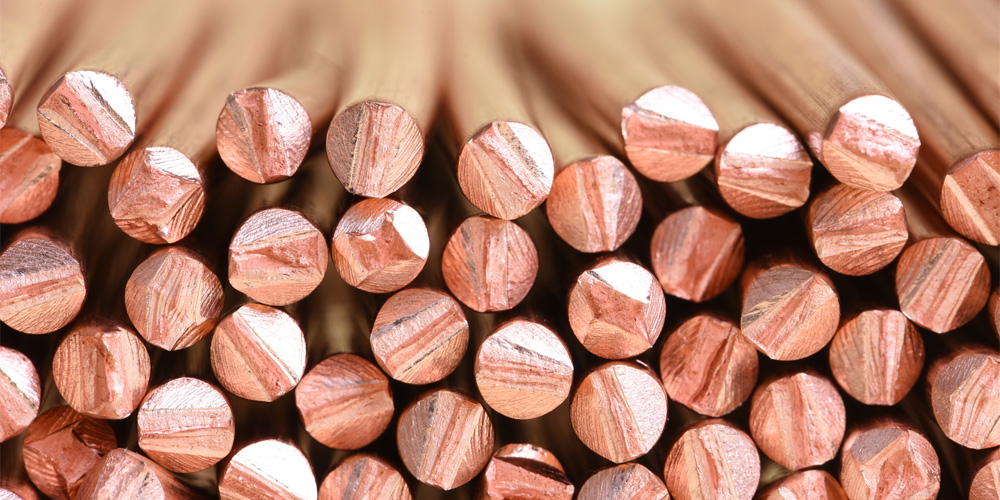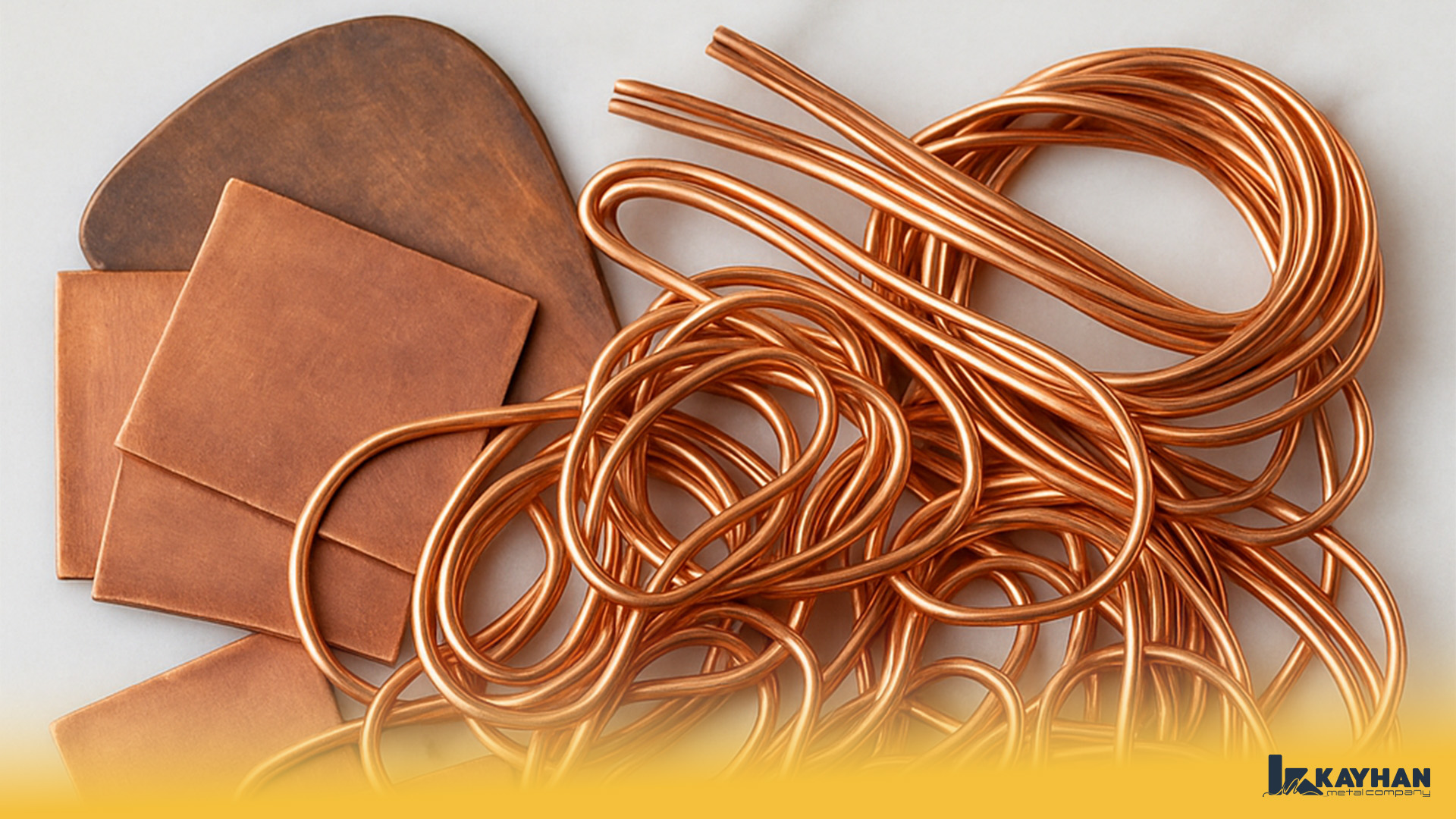Copper is renowned for its excellent electrical conductivity, making it the default choice in many electrical systems. However, pure copper isn’t always the most suitable material in every electrical application. In high stress environments or specific industrial requirements, the properties of pure copper may fall short in areas like strength, corrosion resistance, or thermal stability. This is where alloyed copper comes in. By introducing small amounts of alloying elements, engineers can tailor the material to meet diverse performance needs. This blog explores the alloyed copper electrical properties and how they make a difference in real world applications.

Understanding Alloyed Copper and Its Electrical Properties
Alloyed copper refers to copper that has been combined with one or more additional elements such as zinc, tin, phosphorus, or nickel. These additions are carefully controlled to maintain most of copper’s inherent electrical conductivity while enhancing other mechanical and chemical properties. Although introducing alloying elements slightly reduces conductivity compared to pure copper, the trade off is often justified by increased strength, better wear resistance, and higher durability.
For example, phosphorus bronze (copper tin phosphorus alloy) retains good conductivity but gains excellent fatigue resistance and elasticity. Similarly, copper nickel alloys are used in marine and corrosive environments due to their strong resistance to saltwater degradation.
How Alloying Elements Improve Alloyed Copper Electrical Properties
Different alloying elements serve specific purposes:
- Tin improves corrosion resistance and strength while preserving acceptable conductivity.
- Phosphorus enhances wear resistance and reduces friction, ideal for sliding contact applications.
- Zinc (as in brass) increases strength and machinability, though it compromises electrical performance more significantly.
- Nickel offers excellent thermal stability and corrosion resistance, crucial for harsh environments.
These additions adjust the alloyed copper electrical properties to align with the demands of applications such as switchgear, connectors, overhead lines, and electronic components. The ability to modify copper’s characteristics without losing its core advantage conductivity makes alloying an invaluable technique in material engineering.
The Balance Between Conductivity and Strength in Alloyed Copper
One of the major challenges in alloy development is maintaining high electrical conductivity while improving mechanical strength. Pure copper boasts a conductivity of about 100% IACS (International Annealed Copper Standard), but as alloying elements are introduced, this value decreases.
Nevertheless, many industrial applications accept a moderate reduction in conductivity in exchange for significant gains in performance. For example, connectors and terminals that experience frequent mechanical stress benefit greatly from high strength alloys like copper-beryllium, even if their conductivity drops to 45-60% IACS. This balance is critical in designing systems that prioritize both electrical efficiency and physical durability.

Key Applications Benefiting from Enhanced Alloyed Copper Electrical Properties
Alloyed copper is indispensable in various sectors:
- Electrical connectors and terminals: These components require durability and form stability under thermal cycling.
- Transformer and switchgear parts: Alloys with better oxidation resistance last longer in high voltage environments.
- Railway electrification and power distribution: High strength alloys reduce maintenance in harsh outdoor conditions.
- Printed circuit boards (PCBs): Some copper alloys are used in multilayer PCB substrates to manage thermal and mechanical stress.
For instance, when manufacturing copper rod for high load components, the choice of alloy composition directly affects how well the part performs under voltage, heat, and corrosion exposure.
Pure Copper vs. Alloyed Copper in Electrical Systems
Pure copper remains ideal for most low stress, high conductivity needs, such as household wiring and simple bus bars. However, in applications demanding wear resistance or dimensional stability at high temperatures, alloyed copper performs better.
A copper wire used in automotive applications may require resistance to vibration and temperature swings, which is better achieved with alloyed materials. In contrast, standard building wire can rely on the higher conductivity of pure copper. Thus, engineers must weigh factors like cost, durability, mechanical load, and environmental conditions when choosing between pure and alloyed copper.
Environmental and Cost Considerations of Alloyed Copper
While alloyed copper can be more expensive due to the addition of rare or expensive elements, its durability and longer service life often offset the initial cost. Reduced need for replacement, maintenance, and downtime in industrial settings means total ownership costs may actually be lower.
Additionally, many copper supplier companies now offer recyclable and environmentally optimized alloyed products. This not only supports sustainability goals but also improves lifecycle management for large scale electrical infrastructure.
Future Trends in Alloyed Copper Electrical Properties Research
As the demand for electric vehicles, renewable energy systems, and smart infrastructure grows, the need for advanced copper alloys is rising. Research continues into nanostructured copper alloys, dispersion-strengthened composites, and environmentally friendly substitutes for toxic elements like beryllium.
Emerging manufacturing technologies such as continuous casting for 1.8 mm copper rod, 2.6 mm copper rod, and 8 mm copper rod are also enabling higher quality control and consistency in electrical applications. These innovations promise to redefine performance standards for alloyed copper in the coming decade.

Conclusion: Choosing the Right Alloy for Electrical Efficiency
In conclusion, alloyed copper electrical properties offer a versatile foundation for modern electrical engineering. While pure copper excels in conductivity, the strategic use of alloying elements allows for a broader range of functionalities, from corrosion resistance to mechanical strength.
Whether you’re designing components for power transmission, electric motors, or precision electronics, understanding how alloying affects copper’s behavior is crucial. Choosing the right copper alloy from copper wire to copper rod dimensions ensures optimal performance, reliability, and cost effectiveness. For premium grade pure copper products that meet international standards, Kayhanmetal is your reliable partner. As a leading copper supplier, Kayhanmetal offers high purity copper tailored to your exact industrial and electrical needs.
FAQs
What are alloyed copper electrical properties and how do they differ from pure copper?
Alloyed copper electrical properties refer to how copper behaves in terms of conductivity, resistance, and durability when combined with other elements. While pure copper offers the highest conductivity, alloyed versions are often stronger or more corrosion-resistant.
Does alloying copper always reduce its electrical conductivity?
Yes, to some extent. Introducing alloying elements like tin, zinc, or nickel generally decreases copper’s conductivity slightly, but the trade-off is enhanced mechanical strength or environmental resistance.
In which applications is alloyed copper preferred over pure copper?
Alloyed copper is often used in electrical connectors, switchgear, and high-stress environments where durability, wear resistance, or corrosion resistance is critical—despite a small reduction in conductivity.
Can I use pure copper instead of alloyed copper in all electrical applications?
Not always. While pure copper is ideal for maximizing conductivity, it may lack the mechanical strength needed in applications exposed to physical stress, high temperatures, or corrosive conditions.


No comment